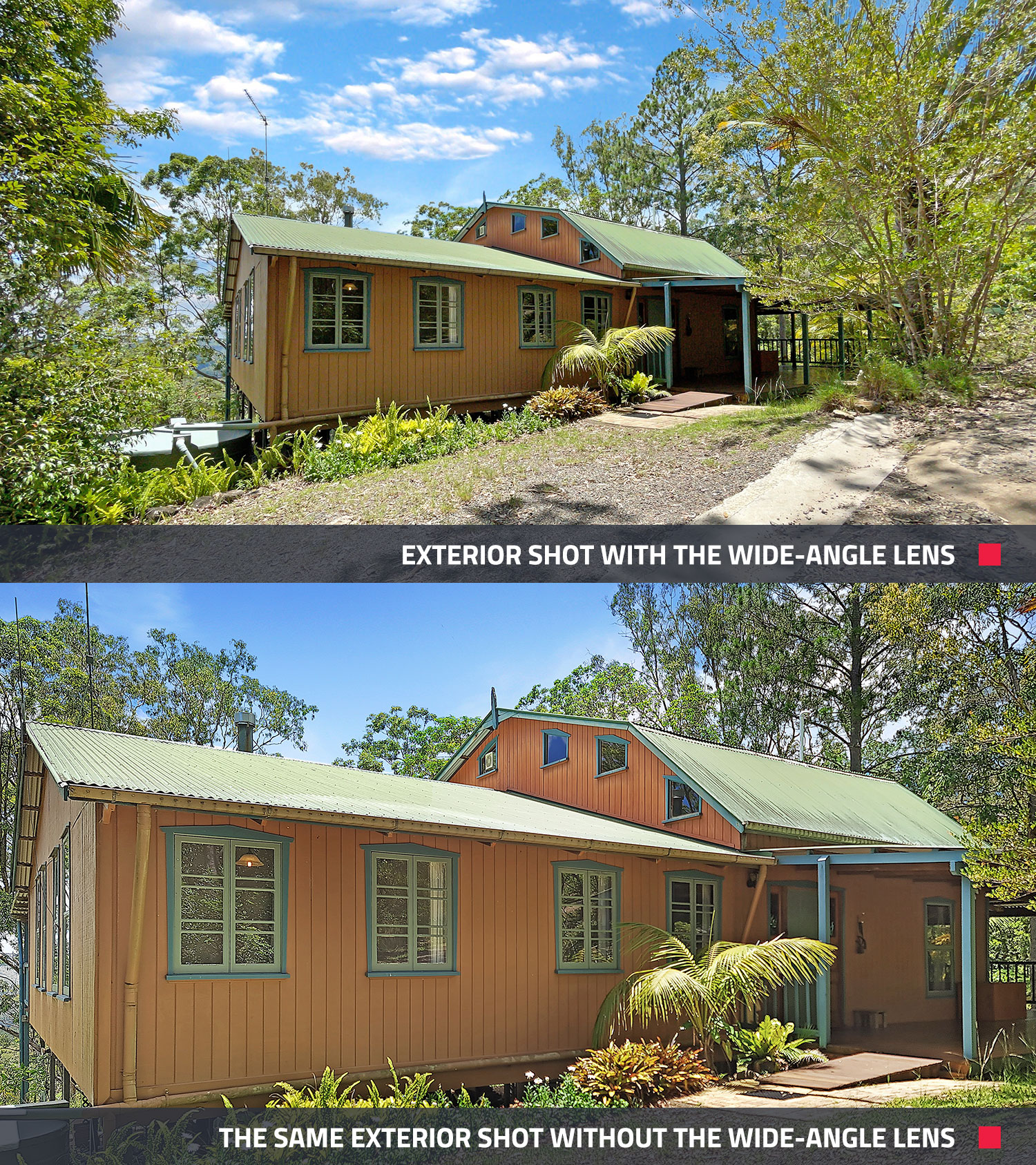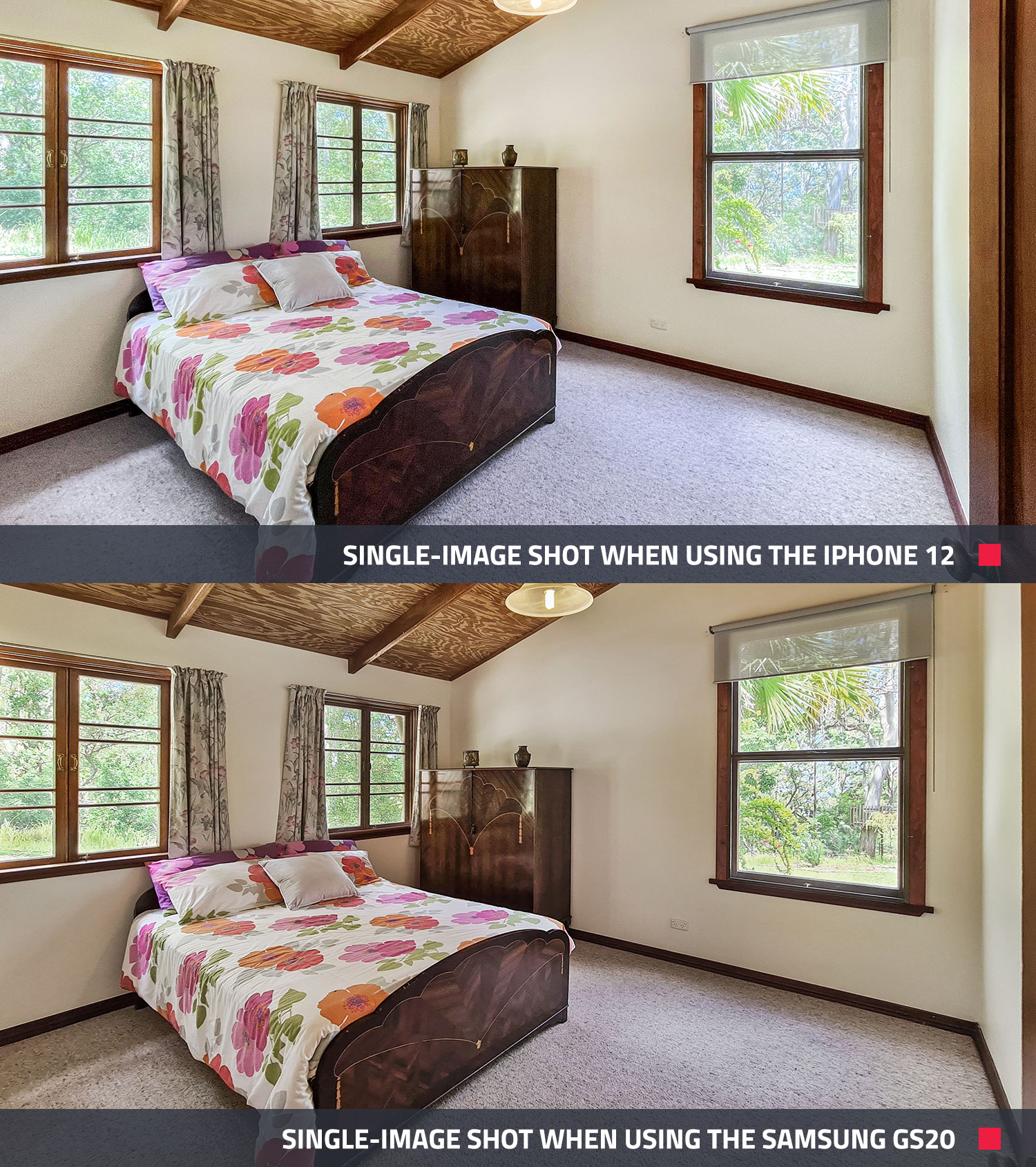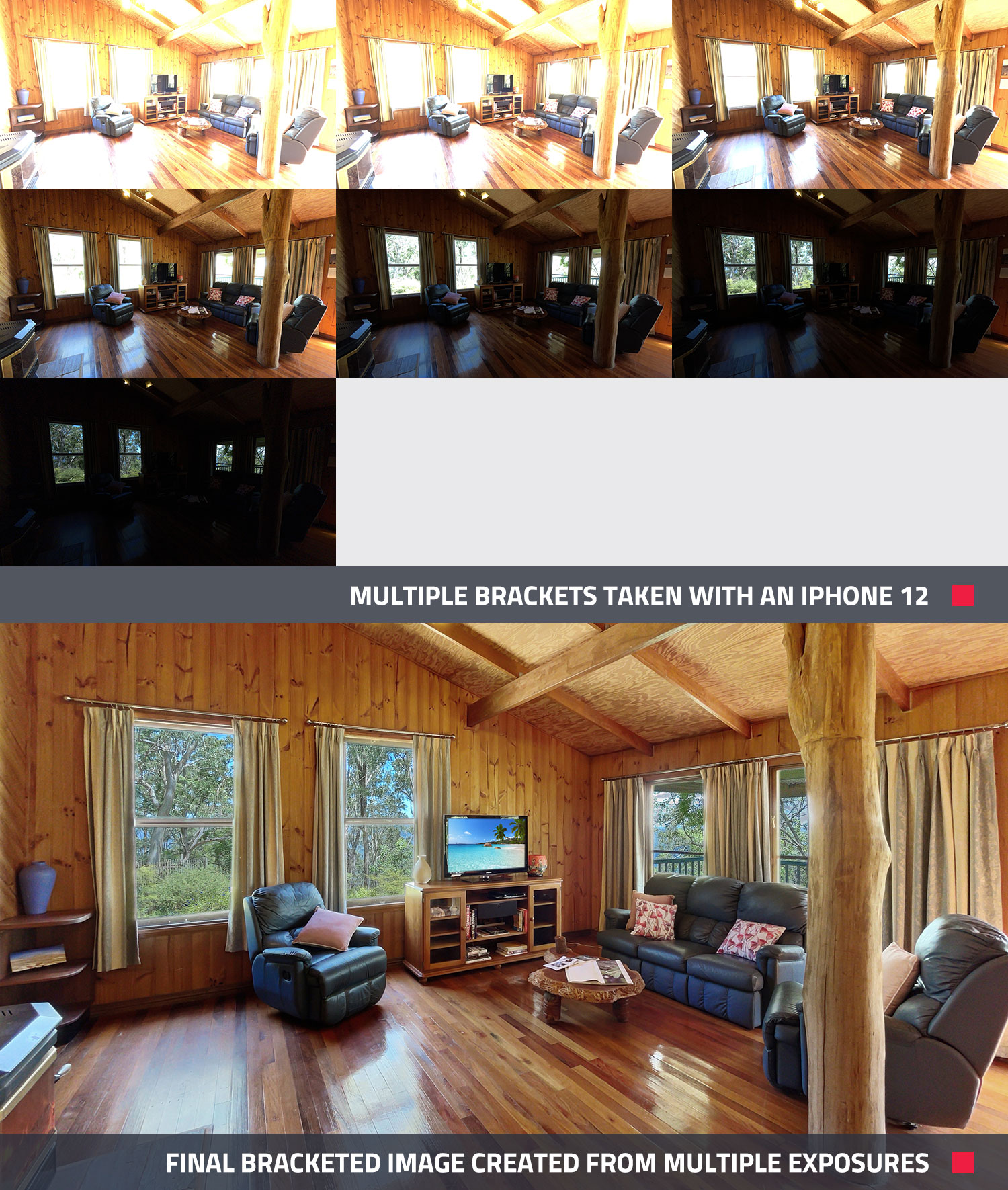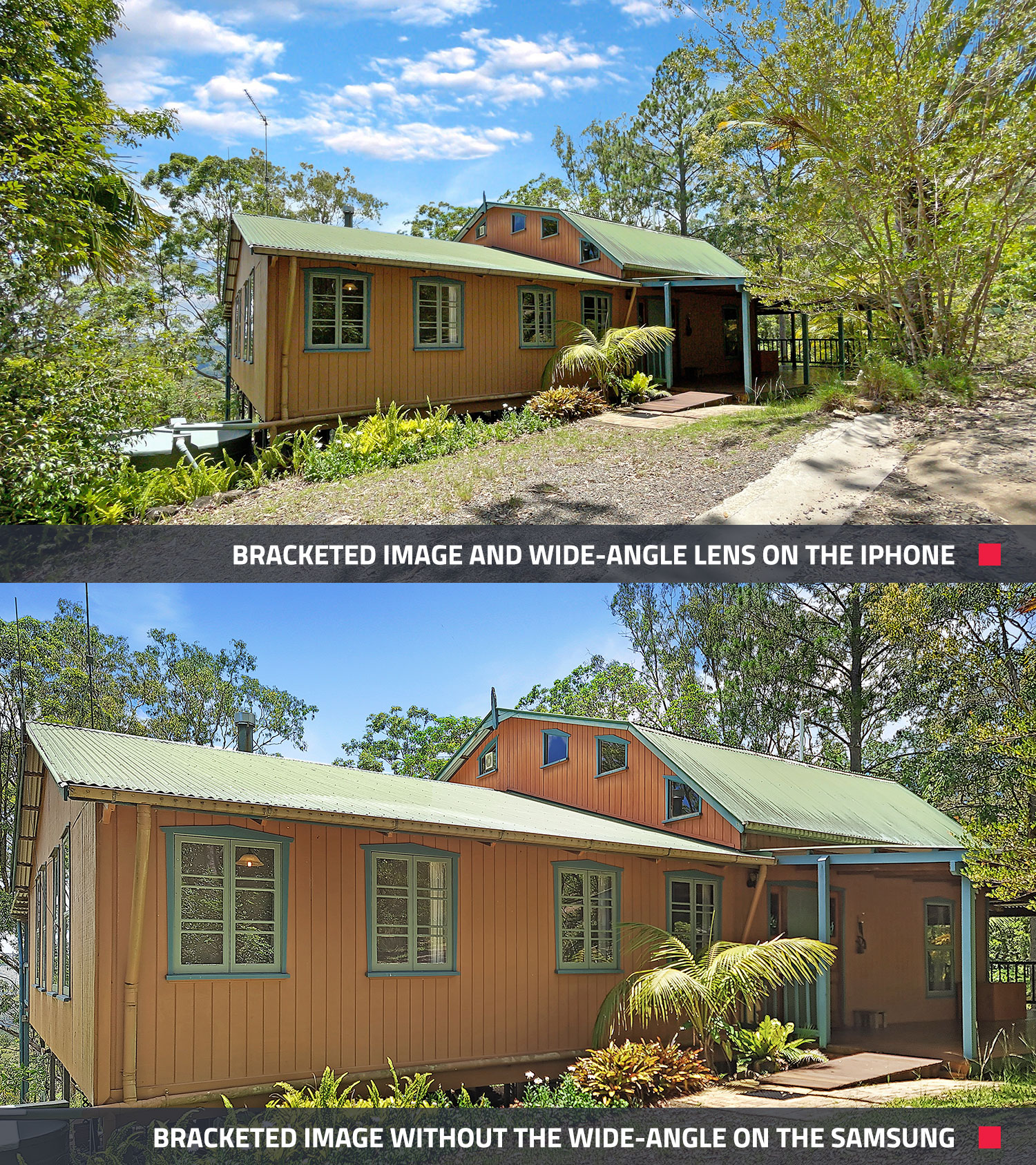APPLE OR SAMSUNG? WHICH PHONE IS BEST FOR TAKING REAL ESTATE PHOTOS
Introduction
When it comes to smartphones, most people can usually be divided into two camps - the Apple camp and the Samsung camp. While we all might have our reasons for choosing our favorite phone, when it comes to the latest and greatest smartphone the question remains; which is the best for shooting real estate photography?
In this blog, we will be doing an in-depth comparison of both the Apple iPhone 12 and the Samsung GS20 to see which smartphone comes out on top.
Spoiler Alert: The Apple iPhone 12 is the winner, now let’s find out why!
Single-Shot Comparison
Both the iPhone 12 and the Samsung GS20 come standard with a built-in wide-angle lens which is absolutely essential when shooting real estate photography. This feature will help you capture a professional-looking image while at the same time allowing you to capture more of the space and bring context to the shot.
As you can see in the example below, the shot without the wide-angle lens results in an image that appears cropped and simply doesn’t showcase the property to its full potential.

In actual fact, you will likely notice that the wide-angle lens on both the iPhone 12 and the Samsung GS20 appears too wide when you are framing up the shot. To ensure the image appears natural and true to the eye, you may have to zoom in slightly before taking the shot. The last thing we want to do is shoot too wide resulting in a finished shot that looks sparse and empty, like an aircraft hangar.

As you can see from the samples provided above, there’s not a whole lot of difference between the two smartphones when comparing the single-image shot.
Bracketing-Shot Comparison
Bracketing is a professional photography technique where you capture multiple different exposures of the same shot which are then merged into one finished product. This allows incredible detail to be captured, particularly when showcasing exterior views from windows.
We’ve covered bracketing in detail in previous blogs and if you’d like to learn more about this critical technique, you can visit our blog on How To Shoot HDR Bracketing here.

Unfortunately, neither the iPhone 12 nor the Samsung GS20 can shoot bracketed shots from their native camera app. To access this functionality on your iPhone, you will have to download the CameraPixels Pro app directly from the App Store. This app will cost you approximately US$10 to download, at the time of writing this blog.
For Samsung GS20 users, you will need to download the free Manual Cam app from the Google Play store to be able to access this bracketing functionality. Once your respective apps are set up correctly, it’s simply a matter of taking the shot as you normally would however, this time multiple exposures will be captured automatically. Click here to see how to set up the CameraPixels Pro app for bracketed images.
Once you’ve finished your property shoot, you can have the multiple exposures blended into the one finished magazine-quality shot using the BoxBrownie.com editing process. It really is that simple.
The good news is that for the iPhone 12 users, the Camera Pixels app and the wide-angle lens technology work perfectly together and create stunning shots. However, the Manual Cam app and the Samsung GS20 wide-angle lens aren’t compatible which means your finished shots on the Samsung will likely appear cropped and won’t capture the shot in its entirety.
We tried multiple different apps to achieve the same functionality as the iPhone and there was nothing we could find that allowed the wide-angle lens to operate with the Samsung GS20.

If you’d like to learn more about shooting real estate from start to finish when only using an iPhone 12, check out our previous blog here. For this comparison, all images were edited using our Image Enhancement edit which offers a 16-step enhancement process to ensure your listings can be showcased in their best light.
Conclusion
Based on this comparison, it’s pretty clear we are voting the iPhone 12 as the clear winner when it comes to the latest and greatest smartphones for capturing professional real estate photos.
While the two smartphones might be fairly comparable when capturing single-shot exposures, there is simply no comparison when shooting wide-angle bracketed images in HDR mode. The inability to use the wide-angle lens functionality with any of the Samsung-compatible apps is a major drawback and will significantly impact the finished product.
If you’ve never given us a try but are keen to take your real estate photography to the next level, why not sign up to BoxBrownie.com today for FREE? For new clients, we are offering four FREE photo edits on sign-up. Simply head over to BoxBrownie.com to get started.
RELATED ARTICLES

We just picked up the brand new iPhone 14 and one thing is abundantly clear – it is insane at taking high-quality photos! In this video, we shoot an apartment using Apple’s latest tech to showcase how much of a weapon the iPhone 14 is. Check it out now!
READ MORE
In our latest video, cofounder Brad Filliponi shows how messy rooms won’t hold up your listing. With SnapSnapSnap, shoot once and get polished, buyer-ready photos in just 24 hours.
READ MORE
SnapSnapSnap empowers real estate professionals to take stunning property photos on the go with an iPhone and offers multiple capture modes to suit the needs of every user. Keep reading to learn which mode is best for your photography goals.
READ MORE
Looking for an innovative way to take your property marketing to the next level without breaking the bank? The new iPhone 11 is amazing and in this blog we are going to show you our top tips to professionally shoot your next real estate listing without the need for bulky and expensive camera equipment.
READ MORE
Eager to experiment with 360-degree virtual tours but are nervous about spending too much time and money getting started? In this blog, we put three of the best 360-degree budget cameras to the test to understand if it's possible to produce professional-quality virtual tours for real estate without breaking the bank.
READ MORE
Create professional property listings affordably with high-quality photos, aerial images, virtual tours, and floor plans — all achievable for under $65!
READ MORE